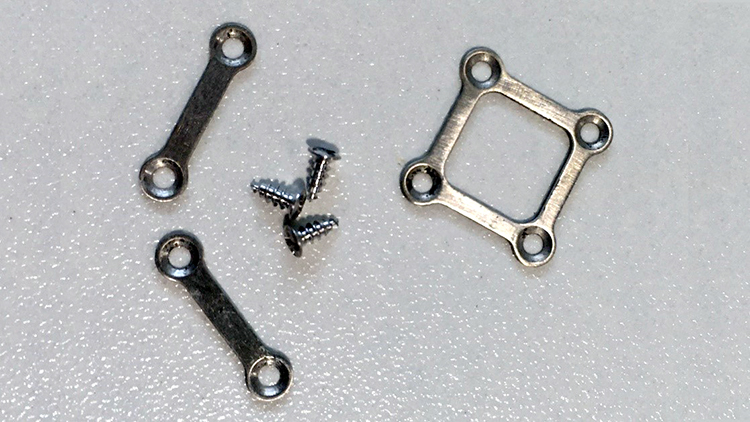News
NUS Dentistry contributes to ground-breaking innovation in fracture fixation
Working in collaboration with NUS Mechanical Engineering Associate Professor Manoj Gupta and his former PhD supervisees, NUS Dentistry Assistant Professor Raymond Wong has helped develop a ground-breaking innovation in fracture fixation – OrthoMag. OrthoMag is a first-of-its-kind bone implant that dissolves naturally in the body as the bone heals, unlike traditional bone implants in the form of screws and plates made of titanium and its alloys.

The OrthoMag maxillofacial plates and screws lend mechanical stability to healing bones and dissolve naturally afterwards
In many cases, there is no real need for these implants to persist after the bone has healed. Additionally, implants may lead to stress shielding where the bone resorbs and thins out, as well as require another surgery. While there are resorbable non-metallic implants available in the market, they are generally made of polymers that suffer from poor strength, leading to the need for the plates to be bulky to be able to withstand functional forces. OrthoMag significantly reduces post-surgery complications, and can potentially render revision operations obsolete in the trauma fixation sector hence reducing the long-term physical, financial and emotional burden on patients.
“Revision surgeries for permanent metallic implants today will typically cost an additional S$5,000 to S$10,000 to the patients, and in some cases cause a risk for post-operative infections, wound healing problems, refractures, nerve damage, and long-term pain. OrthoMag can potentially save the overall healthcare system several billions of dollars a year by avoiding a second surgical intervention,” shared Assistant Professor Raymond Wong.
Working with Associate Professor Manoj Gupta since 2018, Assistant Professor Raymond Wong and his team was responsible for the biological testing, working on cytocompatibility in cell cultures, corrosion testing, part of the mechanical testing and computational modeling of the forces acting in the jaws. He hopes to move on from cytocompatibility testing to biocompatibility testing in 3D cell cultures as well as in animal models before move on to clinical trials in humans.

